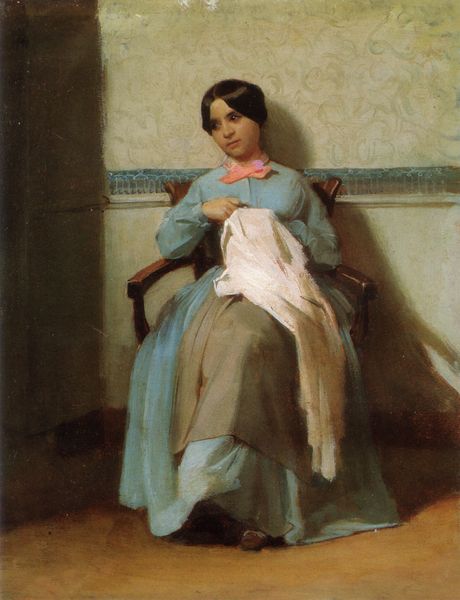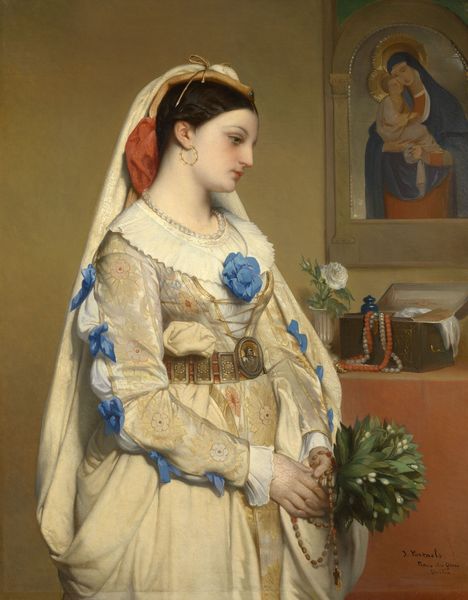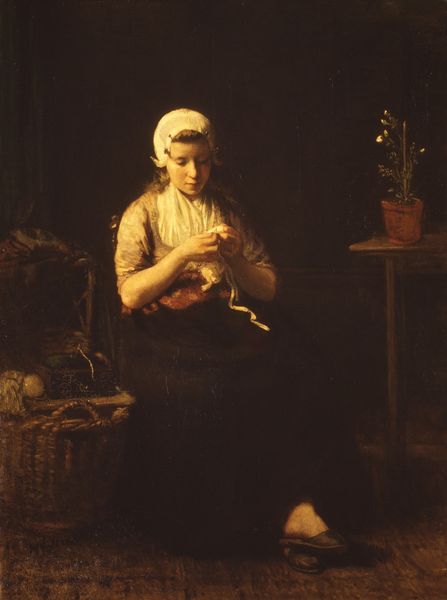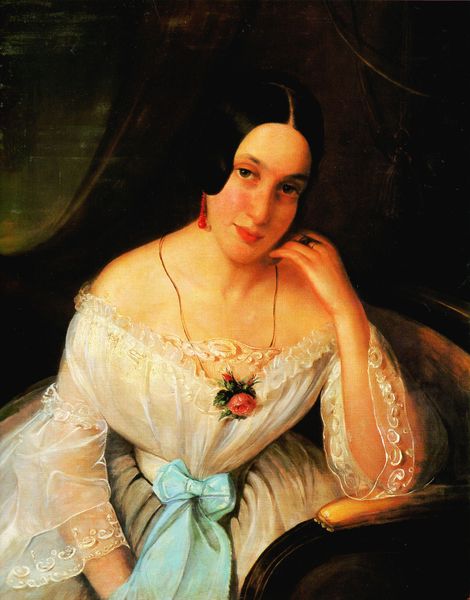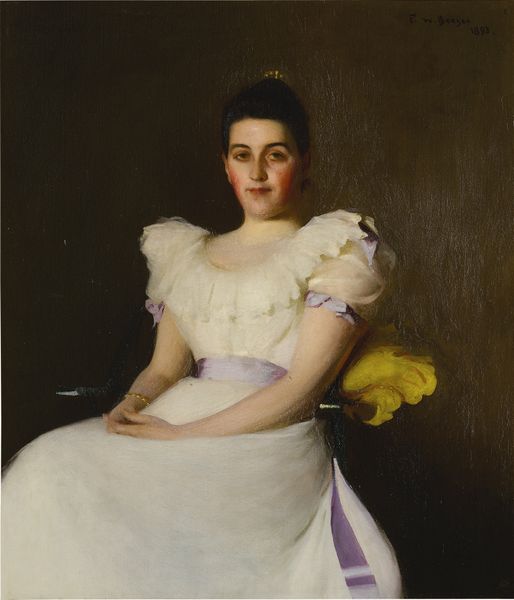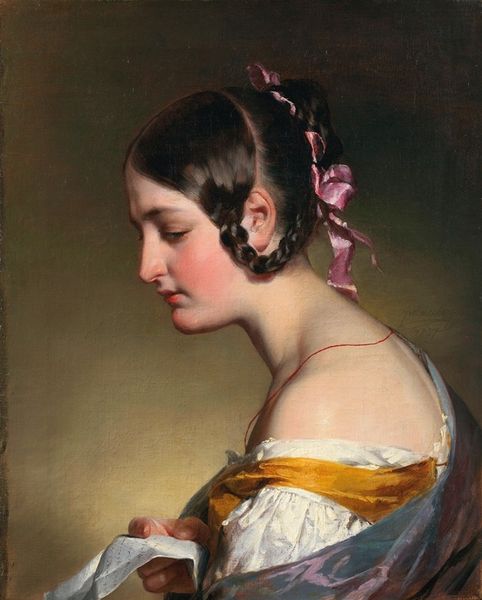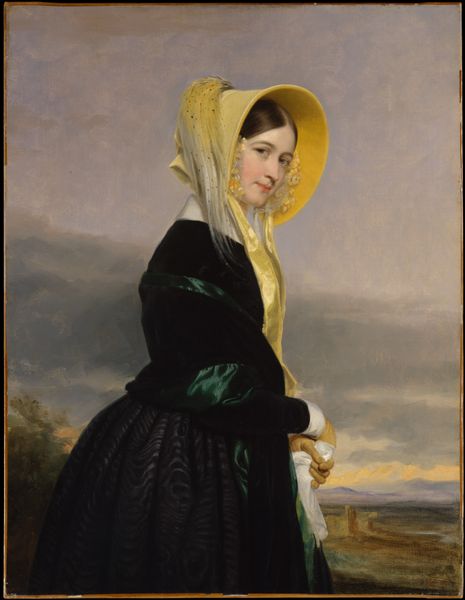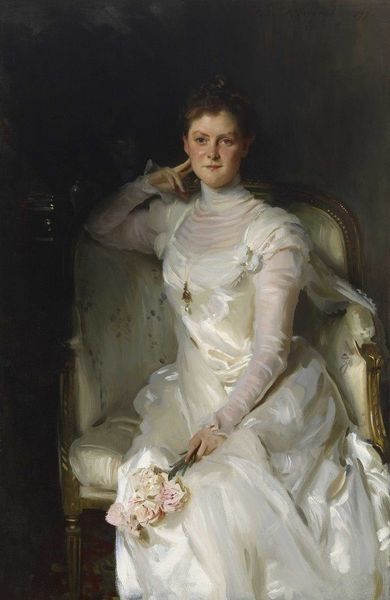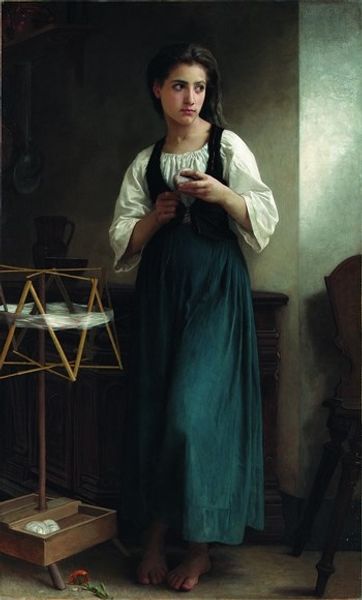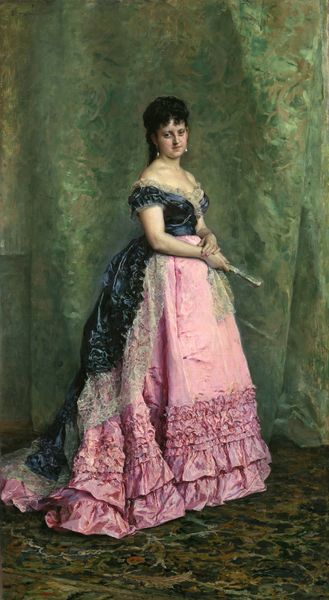
painting, oil-paint
#
portrait
#
character portrait
#
allegory
#
baroque
#
dutch-golden-age
#
painting
#
oil-paint
#
history-painting
Dimensions: support height 151 cm, support width 113.5 cm
Copyright: Rijks Museum: Open Domain
Curator: This is Paulus Bor's "Cydippe with the Apple of Acontius," created around 1645-1655. Editor: It’s surprisingly subdued for a Baroque painting, isn't it? The somber tones and contemplative mood give it an unusual intimacy. The drape of her robe almost looks tactile, you can tell the painter invested effort into making that fold drape with depth and body. Curator: Indeed. Bor was known for his unique interpretations of classical subjects. Cydippe here is part of a Greek love story. She was tricked into marrying Acontius after unknowingly vowing to marry him by picking up an apple he inscribed with that promise and leaving in her path during a religious festival. Editor: So, the apple becomes a material symbol of trickery and forced consent? It's an everyday object imbued with consequence. How was this piece commissioned or marketed during this period, and who was its original owner, do we know? Curator: That part of the painting’s social life is still somewhat unknown. Bor worked outside the mainstream of the Dutch Golden Age, and this painting has themes relevant to gender studies: Cydippe is seemingly devoid of agency, a reflection on societal constraints on women. It seems, to me, as a potent metaphor of female subordination couched within classical storytelling. Editor: The crafting of her clothing seems intentional. It is interesting how Bor frames her garments almost against her, she doesn't necessarily adorn them, they adorn her, presenting her within certain limitations as dictated by gender. Curator: Right. And her gaze is also key; she is pensively contemplating this instrument that dictates her future. You can tell Bor's mastery of form is quite progressive because this moment captures the complexity of love, obligation, and autonomy. Editor: Looking at the paint application, it's so smooth. Almost like enamel work to reflect certain surfaces that also creates shadows that accentuate that somber tone we noticed before. One has to appreciate the hours of labor dedicated to layering these materials and making choices that elicit feelings for the viewer. Curator: Exactly. Bor prompts us to consider enduring power dynamics throughout history, even in how these mythologies permeate the reality for so many in that period. Editor: Ultimately, the deceptive qualities of material production mirrors the events of its narrative, and what it all represents is ripe for debate even today. Curator: Very true. It certainly provides a rich point of conversation!
Comments
rijksmuseum about 2 years ago
⋮
This scene is taken from the Heroides by the Roman poet Ovid. When Cydippe went to make an offering at the temple of Diana, Acontius, who was secretly in love with her, threw an apple inside with the following words written on it: ‘I swear by the sanctuary of Diana that I will marry Acontius.’ Cydippe read the words aloud, thus turning them into a solemn vow.
Join the conversation
Join millions of artists and users on Artera today and experience the ultimate creative platform.
